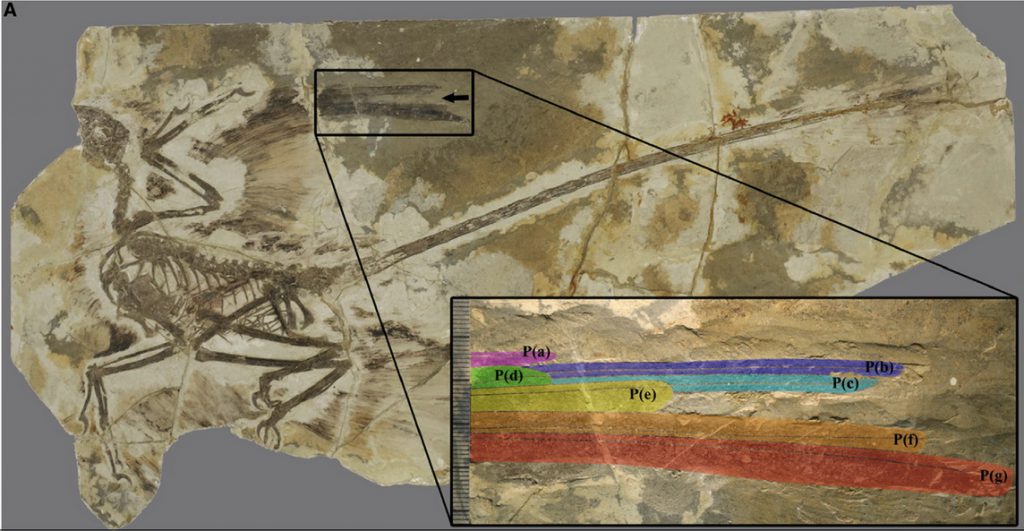Evolution of birds - the first fossilized evidence of sequential wing...
Research by: Prof. Nir Sapir
Feather molt is an important life-history process in birds, but little is known about its evolutionary history. Here, we report on the first fossilized evidence of sequential wing feather molt, a common strategy among extant birds, identified in the Early Cretaceous four-winged dromaeosaurid Microraptor. Analysis of wing feather molt patterns and ecological properties in extant birds imply that Microraptor maintained its flight ability throughout the entire annual cycle, including the molt period. Therefore, we conclude that flight was essential for either its daily foraging or escaping from predators. Our findings propose that the development of sequential molt is the outcome of evolutionary forces to maintain flight capability throughout the entire annual cycle in both extant birds and non-avialan paravian dinosaurs from 120 mya.
Wing Molt in Microraptor: This specimen exhibits an active molt in the primaries (the arrow points to the molt-related wing gap). The bottom right inset shows how we identified seven primaries in the specimen’s wing, marked as P(a)–P(g). Based on the molt sequence, one may infer that the long inner primaries are new, the shorter primaries in the mid-hand are growing, and the long outermost primaries are old.
Additional information:
Video: https://www.youtube.com/watch?v=0fgZt0tEyBc&ab_channel=CellPress
Article: https://www.cell.com/current-biology/fulltext/S0960-9822(20)30862-9?dgcid=raven_jbs_etoc_email
Laboratory: https://sciences.haifa.ac.il/new/faculty/nirsapir/

